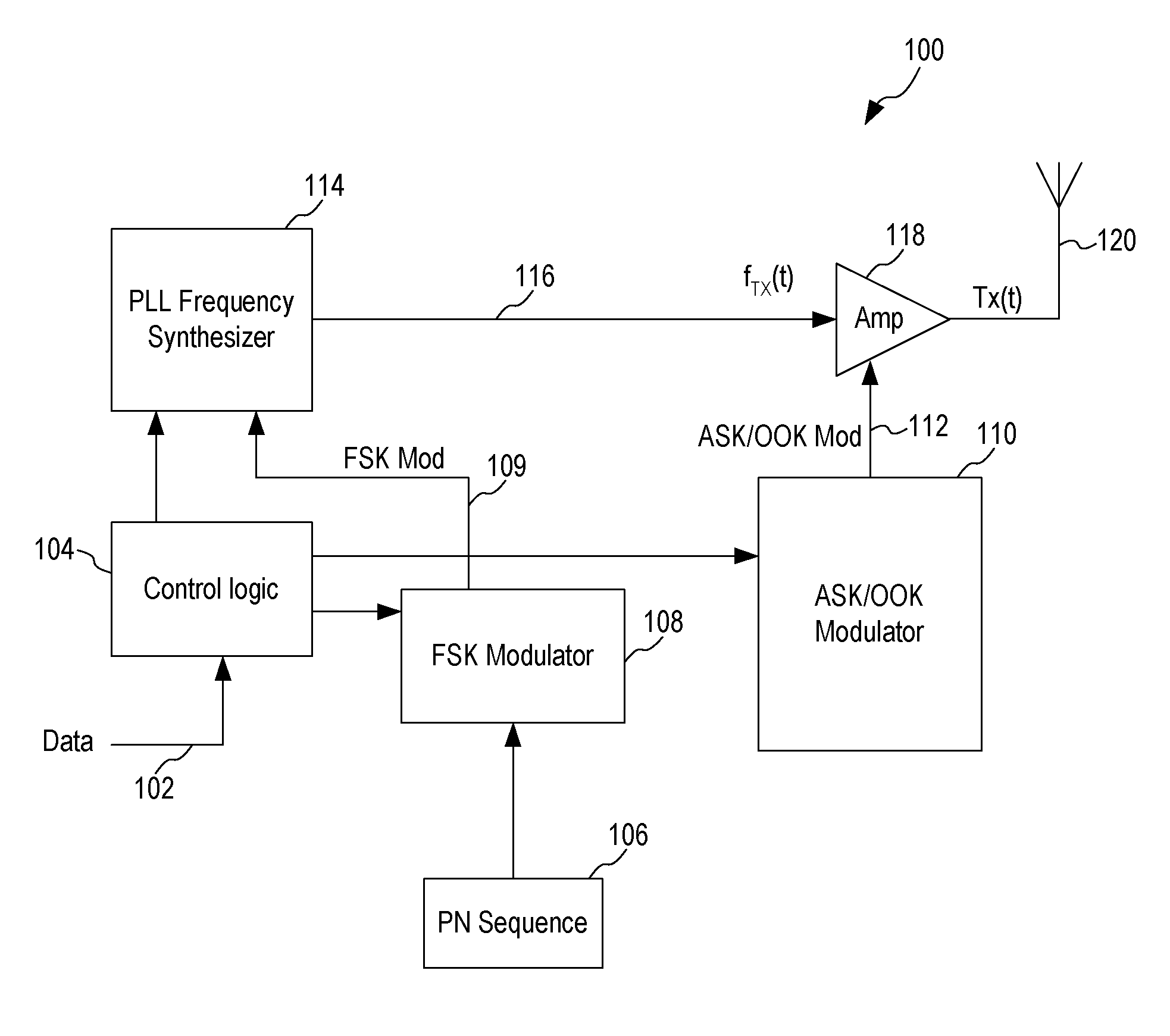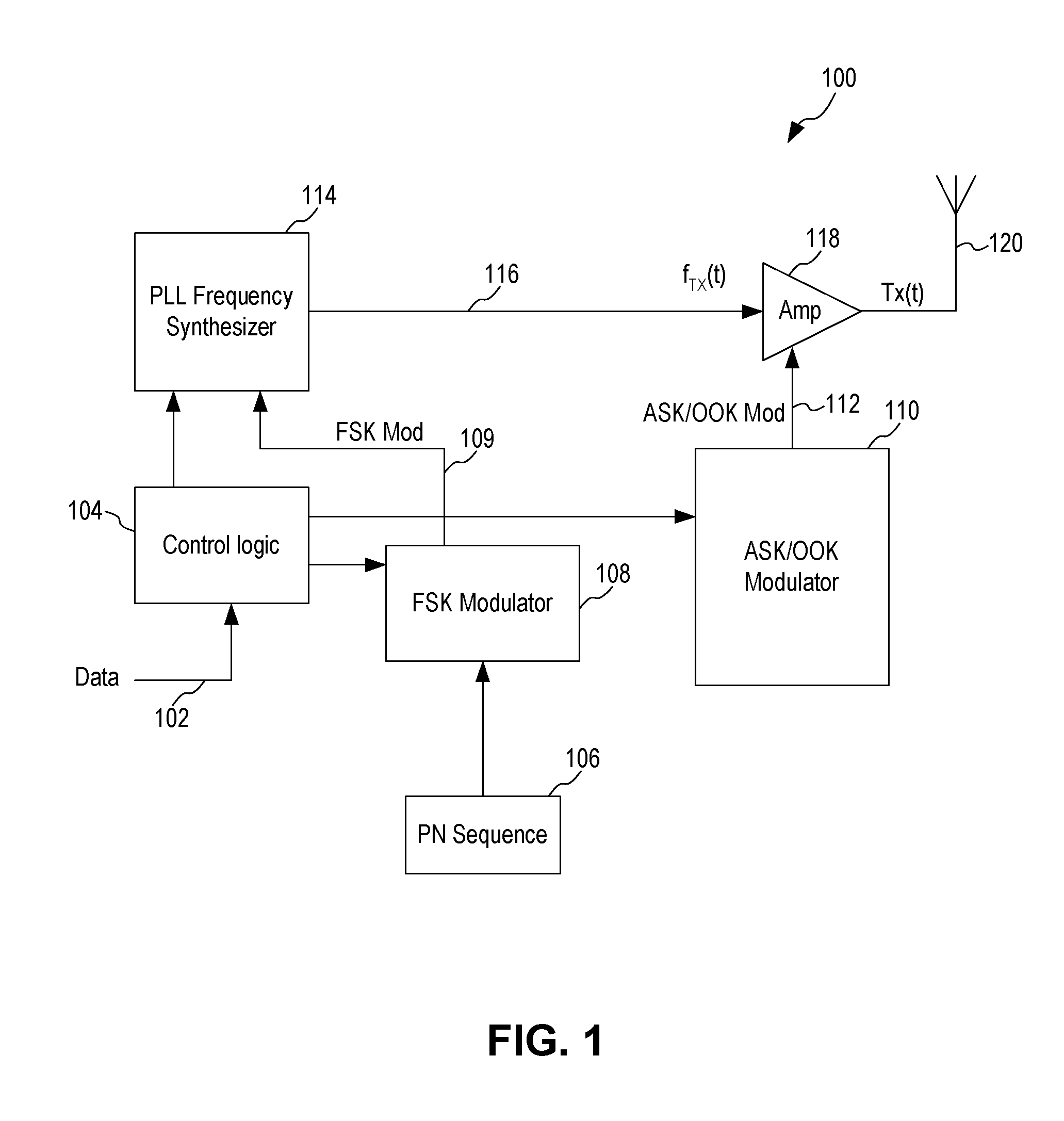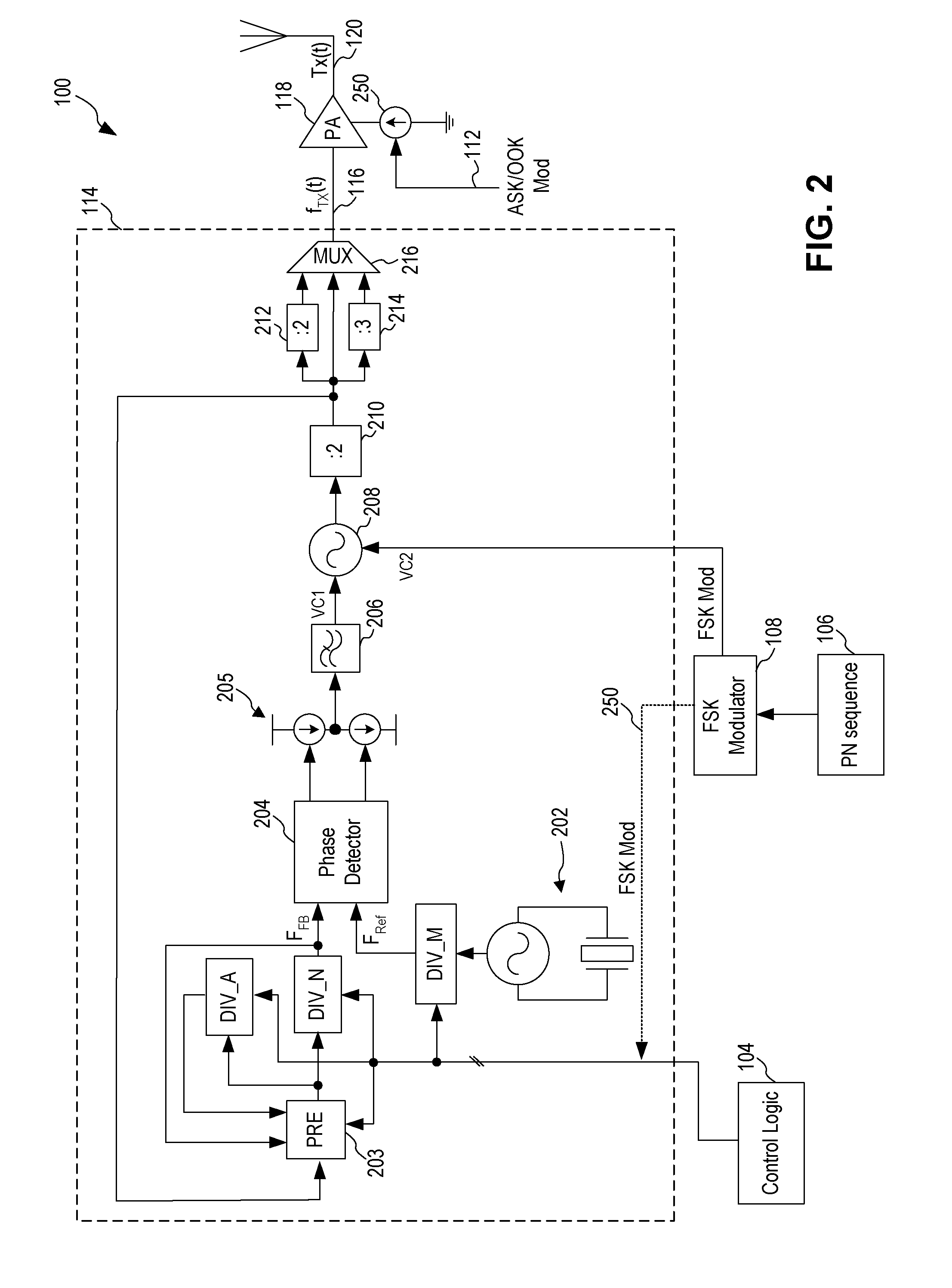Spread Spectrum ASK/OOK Transmitter
a transmitter and spectrum technology, applied in the direction of transmission, electrical equipment, etc., can solve the problems of high power consumption, slow access time, and need for frequency synchronization between the transmitter and the receiver
- Summary
- Abstract
- Description
- Claims
- Application Information
AI Technical Summary
Benefits of technology
Problems solved by technology
Method used
Image
Examples
Embodiment Construction
[0021] In accordance with the principles of the present invention, a spread spectrum ASK / OOK transmission scheme generates transmission signals by dithering the ASK / OOK carrier signal with a frequency-shift keying (FSK) modulation component. The resulting frequency spectrum of the transmitted signal becomes wider and can therefore qualify as Spread Spectrum transmission under the requirements of FCC regulations, such as FCC 47 section 15.247 for communication systems using digital modulation. FSK modulation is easy to generate on the transmitter side but complex to detect on the receiver side. However, in accordance with the present invention, all the information content resides in the ASK / OOK signal component. Therefore, it is not necessary for the receiver to detect the FSK component of the transmitted signal at all. Thus, the transmitter, receiver or transceiver for generating-transmitting and receiving-detecting the spread spectrum ASK / OOK signals of the present invention can be...
PUM
 Login to View More
Login to View More Abstract
Description
Claims
Application Information
 Login to View More
Login to View More - R&D
- Intellectual Property
- Life Sciences
- Materials
- Tech Scout
- Unparalleled Data Quality
- Higher Quality Content
- 60% Fewer Hallucinations
Browse by: Latest US Patents, China's latest patents, Technical Efficacy Thesaurus, Application Domain, Technology Topic, Popular Technical Reports.
© 2025 PatSnap. All rights reserved.Legal|Privacy policy|Modern Slavery Act Transparency Statement|Sitemap|About US| Contact US: help@patsnap.com



